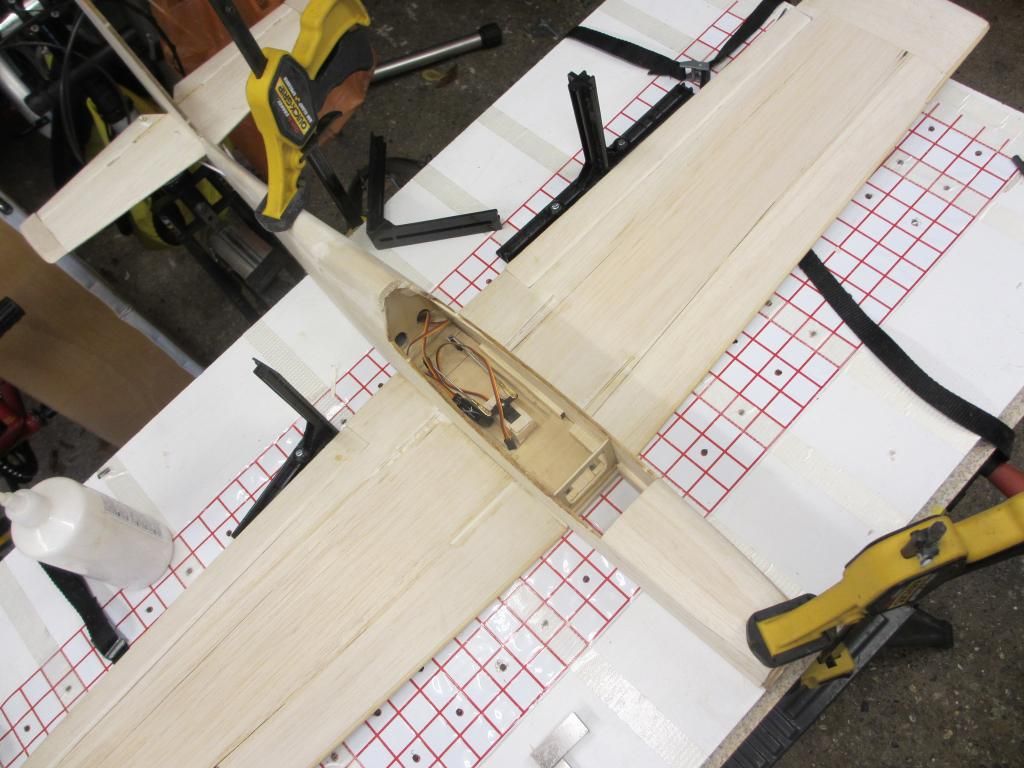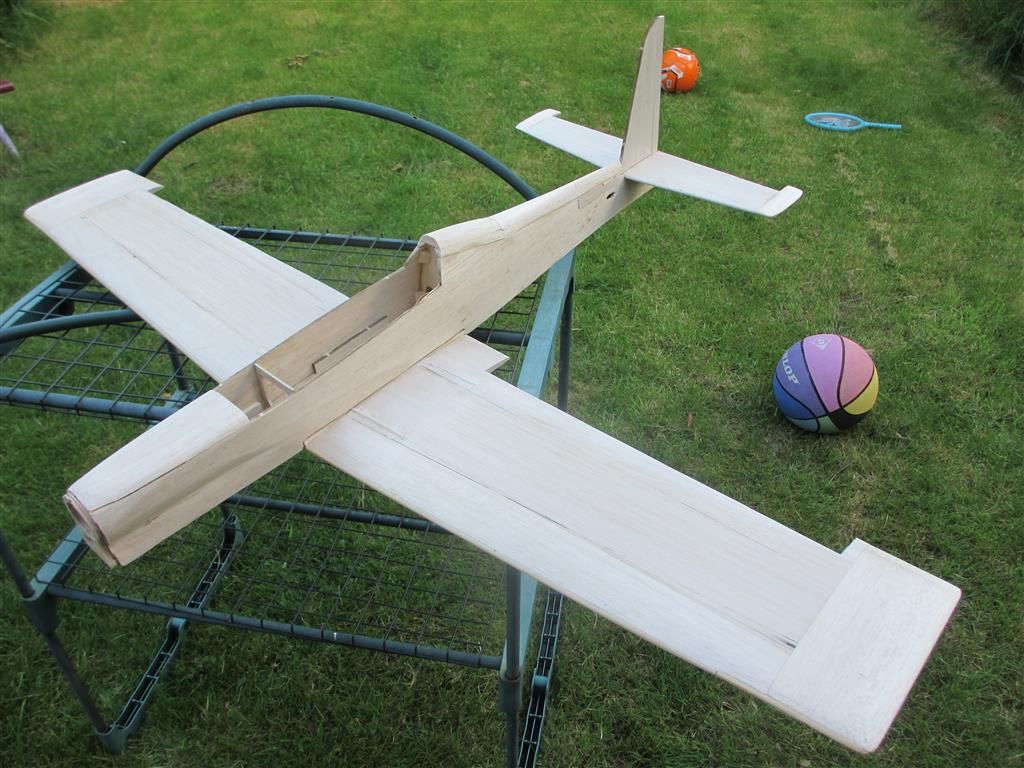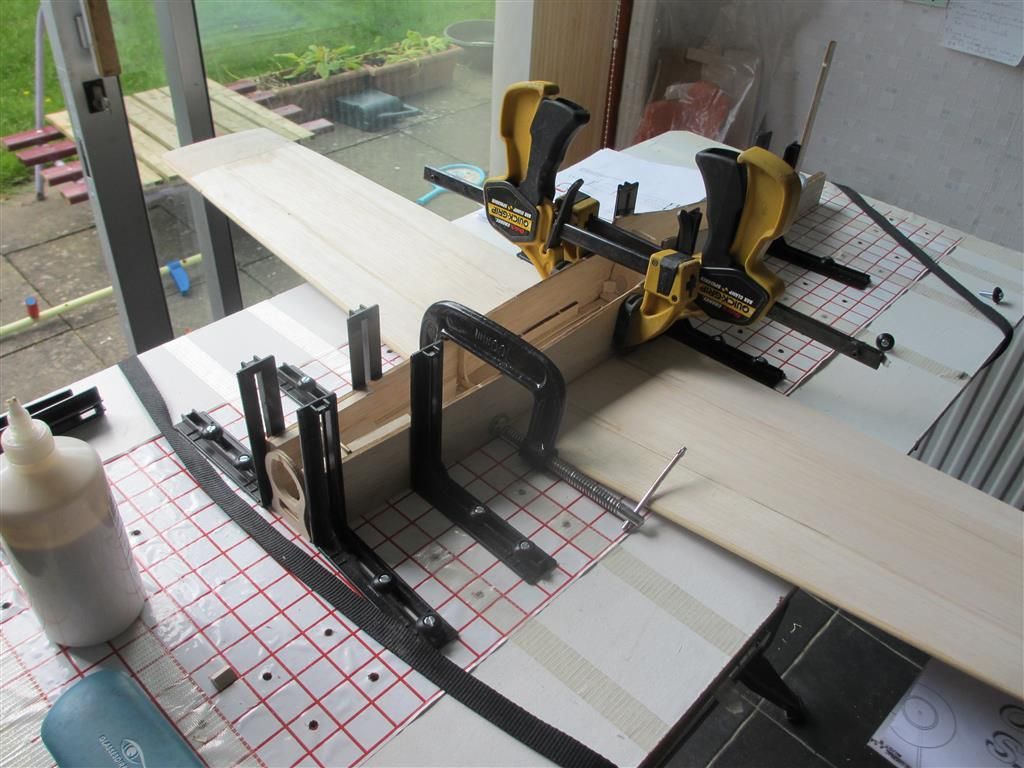
JAMES S
-
Posts
73 -
Joined
-
Last visited
Never
Content Type
Profiles
Forums
Blogs
Gallery
Calendar
Downloads
Posts posted by JAMES S
-
-
Right Dave - I think I'll leave starting the engine until I've stuck some fuel proofer on it ......unless I can test in some way.....would a dab of fuel on the fuz make a colour change to the material if its not been fuel proofed?
next question.....Is the throttle fully off with the throttle lever back towards the bulkhead and fully on if the throttle lever is forwards towards the propeller?

-
Thanks Paul ! I am just setting up the radio now for the throttle and may have a go at running it in the garden.
The engine does look like new so maybe that is the reason for low compression.
-
On impulse I bought this lovely looking Flair Attica off ebay. I am unsure if it has been flown or not as it doesn't smell of fuel or seem that dirty. Or have crash damage like most things I've flown have.



What happens if it has not been fuel proofed yet and I get fuel on the fuselage or wings? Is there a test to check if its been fuel proofed

Also, any tips on what to do with the OS FS engine? I've only dabbled in 2 stroke's for about 18 months when I first started then switched over totally to electric.

On spinning the propeller I can't feel a lot of compression compared to something like a .50 2 stroke but is this normal on a little 4 stroke?
regards
James
-
Posted by IanN on 22/06/2014 13:11:59:
However the 70mm fans that came with the HET are what the PN design uses, so those will go in there. The rest of the "masterplan" is to use the HET airframe (which is a gorgeous looking thing) for PSS
IanN
I like your style - 2 x ME262's out of one donor kit is getting good value for money. Thanks for confirming that you'll post about the quality of the CNC pack from Traplet when you get it.
James
-
Hi IanN,
I can't help on your specific question but do have experience of a Phil Noel kit which uses the same construction design principles as the ME262, a Tigercat F7F. When Philip Noel had his own website up and running he described the construction of some of his kits as being 'self-aligning'.
What this meant was the intricate formers and central 'spine' of the models could only be assembled correctly one way and the inter-locking balsa parts joined up in a perfectly aligned and accurate fashion with minimal jigging.
I built his Tigercat as my first ever balsa kit and whilst it took ages it was 'straight and true'. I will be very interested to see how well machined the Traplet plan pack is if you do buy it - I fancy having a go at building Philip Noel mosquito.
Instructions used to be available for the kits although not that detailed for the Tigercat. They consisted mainly of photo's of how things should look when assembled. The rcgroups.com Philip Noel build thread linked earlier in the thread is probably as good as any instructions that were available when these kits were being produced by Philip Noel Designs.
subscribed to your build thread.
James
-
Nice suggestions Jack and Ken - both of them sound better then anything I'd come up with. I'll go see what I've got in the garage.
-
Picked up a new chopping board at a village fete this weekend. It is a nice bit of solid marble to cut our rustic loaves on in the kitchen.
Problem is the little plastic feet keep coming off. Board was second hand on the bric a brac stall and looks like Araldite has been used to try and fix the feet - none too successfully.
I'm sure other R/C modellers have been asked to fix bric-a-brac purchases from village fete's up and down the land, probably every weekend and twice on bank holidays..... so the question is....
What glue for hard plastic feet to stick to marble?
Anyone like to share anything they've been asked to fix after some village fete bargain shopping?
J

-
About another 6 hours on the build this week. Lots of minor work, torque rods set-up, all servo's are now connected to control surfaces, control surfaces are shaped, hinged and tested for movement and I've sorted out the fus / wing joiner. Greenacre's is on I think .....

in 2015........
-
The vario function has changed, I run a D4r-II Rx with a vario in a DLG and after upgrading to v2.0.2 and testing this out I found the vario was continually beeping, even when the glider was sitting on the workbench.
The vario behaviour has changed between v1 and v2 - full explanation here:
short summary here of how to set a 'dead band' for the vario here:
james
-
Very useful post which I'm reading after updating the Taranis firmware and Companion. I'm clearly one of those try it and be dammed types since as soon as my old version of Companion offered an upgrade I took it then immediate went into upgrading the Taranis firmware without any thought or research. The advantage of this approach is it saves the time of reading the instructions and backing up stuff......
Fortunately having read through this post and the opentx wiki I don't think I've got too many changes to make, although I will a have to change the voltage alarms to be RxBatt as mentioned above.
James
-
Kev,
I've not had a case split but have had a problem squeezing all the leads in. I took to filling down the servo plugs a bit to reduce their width and help get them in.
James
-
thanks for the comments Phil and BEB - nice to get the feedback !
-
Decided today a bit windy for enjoyable R/C flying so spent most of the day building.

The scroll saw is the best tool I've bought yet for R/C modeling work. The rotary attachment meant hollowing out the tucano's 'cheek's was a five minute job with a rotary sanding drum. It made tons of dust so I was out in the garden to avoid covering the entire garage in a layer of balsa bits. Its looking more plane like now....
-
Anyone else on the forum gone to 2.x firmware? I didn't know it was available until I fired up companion 9.x this morning to set up a new model ( Tucano ) and was offered an upgrade to Open Tx Companion 2 and then after upgrading that I was able to upgrade the firmware on my taranis as well.
So now 10 minutes later I'm running the latest firmware and have already found the new and improved Model Wizard screen:
/Taranis2_zpsd11dc6c2.png

-
Posted by Biggles' Elder Brother - Moderator on 01/06/2014 12:45:38:
Well done getting stuck back into it james - Greenacres this year maybe?
BEB
cheers BEB - we'll I've nothing on the Greenacres weekend, I'll have to think about it!
-
Posted by WolstonFlyer on 01/06/2014 12:36:19:
Looks good so far! I have been thinking about getting a scroll saw or a mini table saw, not sure which one to get.
My Tucano is stood in the corner of my home office, half of the covering done. I don't seem to be able to find time to work on building models at the moment.WolsonFlyer, not sure what is best for you, with my scroll saw I was able to create cut-outs in the fuz formers easily which is something you can't do with the table saw although I imagine the table saw is much better for straightforward cutting as the blade can't wander around like the scroll saw does.
Understand about the problems finding time to fiddle with models, I've had an enforced lay-off from doing other things for a week and the model came to the fore as I couldn't attend to the other jobs I was meant to be doing!
-
Posted by Phil Winks on 01/06/2014 15:08:06:..
You'll find with a really fine blade in its good for nice clean cuts on thicker balsa sheet too just wear a dust mask
Phil - ref the dust - I set up my new pride and joy in the lounge....lots and lots and lots of dust everywhere! I take your point about needing a mask for extended work with balsa. Also agree on your other comment on the quality of the kit - feels very nice and solid.
-
Decided to start building again last bank holiday weekend when it was wet and I was straight into hand cutting fuz formers using a coping saw which was very boring. When the saw blade broke I went off to the hardware store to buy a new pack of blades and on a whim came back with this...

Far easier at cutting ply than a coping saw but the unexpected bonus is the rotary attachment which makes short work of 'fettling' jobs I used to do using a hobby craft rotary tool. I had considered buying a separate dremel but no need now. Money well spent.. Seemed expensive at over £100 but two tools in one. Clarke CSS400C
Anyway a weekends worth of cutting, sanding, fettling, lining up, cutting and generally not progressing very far but actually doing lots of work relating to preparing for assembly has got me to this stage. I've been referring loads to the build blogs of Woolston flyer and Phil Winks whose detachable wing mod I'm using.

I think this stage was probably the key assembly step for the fuz so confidently expect to have these all finished by June.
Edited By JAMES S on 01/06/2014 11:07:06
Edited By JAMES S on 01/06/2014 11:14:00
-
count me in please!
-
Posted by Biggles' Elder Brother - Moderator on 13/05/2014 22:45:44:
C9X will give an even better insight Chris - because firstly you can simulate the Tx and actually see all the screens and secondly you don't have to because you can see them all as a nicely laid out series of tabs. I'm really amazed you are not using this - you're really missing something! Have another go at downloading it - its really worth it. These days I only use the screen on the Tx at the field - any setting up I do at home is 100% on the PC - its so much easier.
BEB
I thoroughly agree with this - it saves a massive amount of time. I've now set-up 10 models on the taranis and the one I did tonight took up all of 10 minutes as I simply copied a similar model of mine ( 2 servo's flying wing ) and then once the model was defined on companion 9x I downloaded the eeprom to the taranis and then did the fine tuning of servo limits, servo inverse, servo travel, stick weights on the actual model. Once that was sorted out I then uploaded the modifed eeprom back to companion 9x ready for use again setting up the next model.
Getting the mixes right on the Alula was a piece of cake - the glider needs lots of aileron and little elevator - and took about a minute to set the weight of the elevator stick to 30% and the weight of the aileron stick to 60%. I've spent ages trying to do that sort of simple thing on my previous radio.
-
Posted by Cuban8 on 11/05/2014 12:12:17:
Sorry if this is a daft question but is the Taranis system ready to go out of the box or does it have to have the Open TX firmware installed and configured by the user?
Edited By Pete B - Moderator on 11/05/2014 12:54:34
Cuban8,
yes its ready to go out the box.
James
-
Posted by Phil Green on 10/05/2014 20:59:37:Posted by JAMES S on 10/05/2014 20:08:52:
...I've swapped out one of my Spektrum Rx's I was using with the orange module in the taranis and put in a little Frsky D4R-II into the DLG. Five minutes on the taranis programming and I've now got a telemetry monitor for the Rx voltage which means I can now set up an alarm if the Rx battery voltage drops too low.
Good to have a voltage indication but dont worry about the D4RII and low voltages. It'll carry on happily when Spekky receivers have long given up. Your servos will stop before the Frsky rx does!
A lot of Frsky users use a single lipo cell in a DLG, perfectly ok. As well as my Elf I also use a single lipo cell in a few of my Frsky S/C models. The cell in my Elf is 350mAh and I've never managed to drain it in a full flying day with everyone having a go.
Cheers
Phil
Hi Phil,
thanks for the recommendation on the single cell, that is a good option to consider as for one thing it simplifies charging.
James
-
Posted by Chris Bott - Moderator on 10/05/2014 21:50:34:
Have a look at this James, it might help.
Hi Chris, very helpful! Having calibrated the voltage sensor I've now got the A1 reading showing Rx battery voltage. Also very nice to see it wasn't obvious ( ! ) how to do this. James
-
Posted by JAMES S on 10/05/2014 20:08:52:
Last weekend whilst out flying my Elf mini DLG and I managed to drain the Rx battery so much the servo's started cutting out mid-flight. Luckily no harm done and when I checked at home it seemed my Rx Lipo was not holding charge properly and fading rapidly when used.
So this weekend I've swapped out one of my Spektrum Rx's I was using with the orange module in the taranis and put in a little Frsky D4R-II into the DLG. Five minutes on the taranis programming and I've now got a telemetry monitor for the Rx voltage which means I can now set up an alarm if the Rx battery voltage drops too low.
Oh, and I threw out the dodgy lipo I was using to power the Rx as well. I'm getting to really like this radio now as I could never have managed a Rx voltage alarm in a Rx small enough to fit into a mini-DLG but have managed it with the D4R-II.
hmmmm.....I'm not so sure now what reading my Taranis is displaying for the lipo Rx battery....I suspect its not what I think it is. I'll have to spend a few hours tomorrow working out what it is actually displaying and what the A1 "range" value does as when I change this the reported voltage is changing.

Ebay Attilla - getting ready to fly it - advice needed
in Traditional kits
Posted
thanks Cymaz, Dave Hopkin and Leccyflyer - your advice on taking the motor out and test running makes perfect sense ( why it didn't occur to me I don't know.....) and I'll then use some flexicote to fuel proof the aircraft.
And I'll go find a manual for the engine online - thanks John Davies 8.